First air date 1922 Class A (clear-channel) City of license New York City Owner Bloomberg L.P. | Power 50,000 watts Facility ID 5869 Format Financial News Call sign meaning Bloomberg Business Radio | |
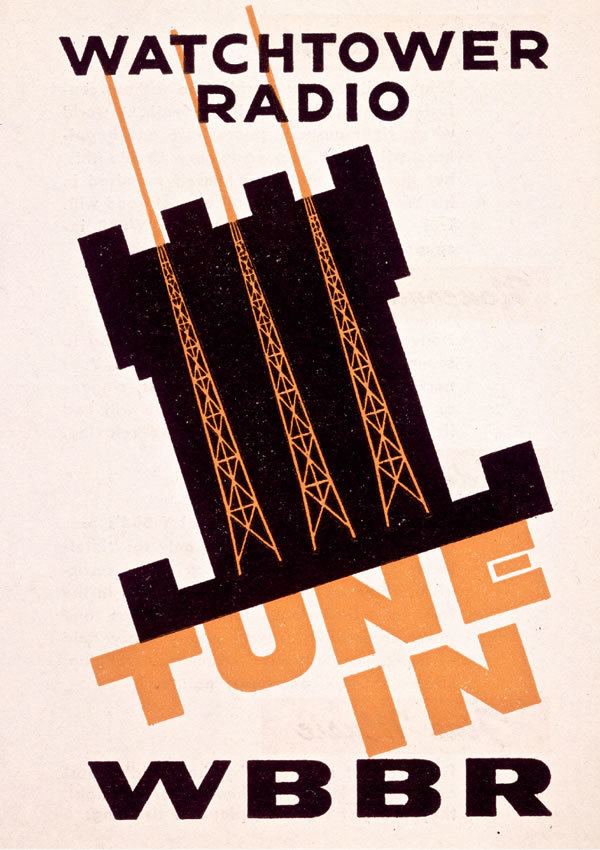 | ||
Broadcast area Tri-State (NY-NJ-CT)(AM) Slogan "Wall Street Listens. The World Listens." Frequency 1130 kHz, Sirius XM 113, Afristar 304, Asiastar 304 Branding Bloomberg Radio, Bloomberg Eleven-Three-O | ||
Jw wbbr vintage radio program association
WBBR (1130 AM) is a Class A clear-channel radio station broadcasting at 1130 AM in New York City. It serves as the flagship station of Bloomberg Radio, a service of Bloomberg L.P. a financial news format, offering local, national and international news reports along with financial market updates and interviews with corporate executives, economists and industry analysts.
Contents
- Jw wbbr vintage radio program association
- Wbbr radio s last weekend
- Programming
- Non business programming
- Bloomberg radio simulcasts
- 1930s 1940s
- 1950s 1960s
- 1970s 1980s
- 1990s present
- References
The station's origins go back to 1922 as WAAM and 1925 as WODA. The station was acquired in 1934 by businessmen Milton Biow and Arde Bulova, who changed the call letters to WNEW, for "the NEWest thing in radio". A radio institution throughout the majority of the 20th century, WNEW was known for its music selection as well as its staff of radio personalities including Martin Block, Dee Finch, Gene Rayburn, Gene Klaven, Ted Brown and William B. Williams. WNEW is credited with pioneering the role of the disc jockey, as well as for developing the modern morning radio show format and debuting the first all-night radio show. In addition to its music and entertainment programming, WNEW featured an award-winning news desk and became "the voice of New York sports" for its coverage of New York Giants football games. After years of declining ratings and management changes in the 1980s, WNEW was purchased by Bloomberg L.P. in 1992 and changed call letters to WBBR.
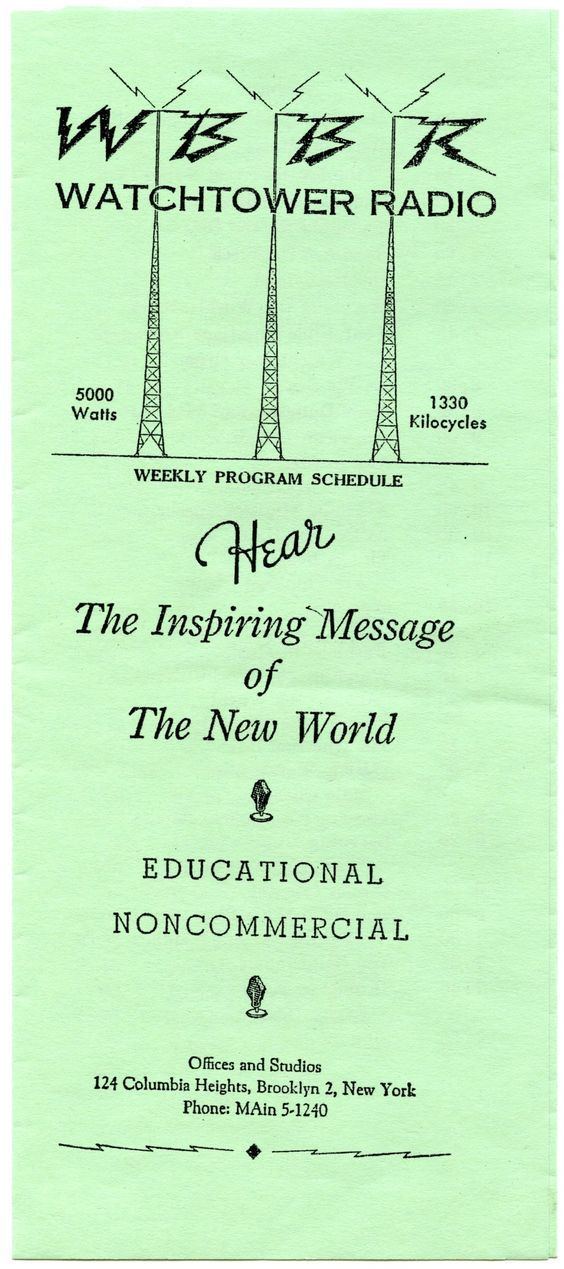
Another radio station used the call letters WBBR from 1922 to 1957. Formerly owned by the Jehovah's Witnesses, it broadcast from Staten Island, on 1330 kHz. Currently, this station is owned by Radio Vision Cristiana and it broadcasts from Teaneck, New Jersey under the call letters WWRV.
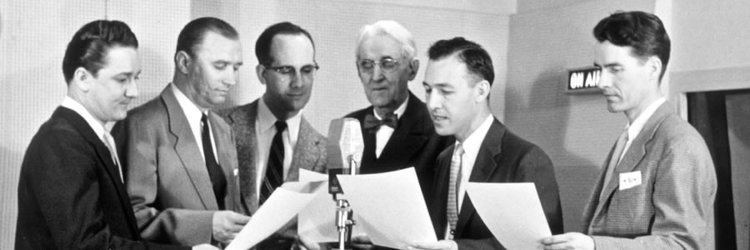
Wbbr radio s last weekend
Programming
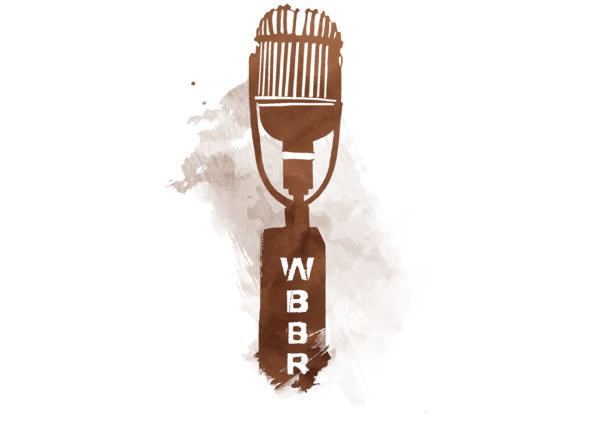
The original Bloomberg Radio news format divided each hour of the day into six 10-minutes segments, each of which contained financial market updates, business headlines, traffic, weather, sports, a human interest piece or a general updates about cultural happenings. However, by 2010, Bloomberg Radio had shifted from a headline service to a discussion-based format in order to offer more in-depth market and economic analysis. Each day, the station broadcasts more than 20 live interviews with economists, market analysts, authors and politicians on shows such as Bloomberg Surveillance with Tom Keene and Ken Prewitt which airs weekday mornings from 7 a.m to 10 a.m.
Non-business programming
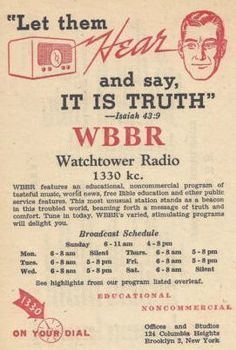
In addition to its business programming, WBBR has radio broadcast rights to several of the national Sunday morning news programs such as Meet the Press, Fox News Sunday, and This Week and airs each of them twice on Sundays.
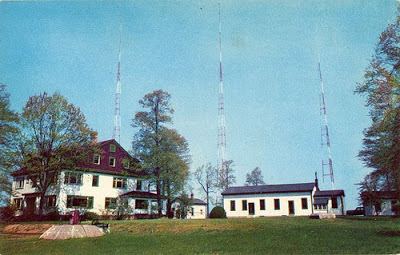
WBBR serves as an overflow station for WFAN and airs games from New York and New Jersey teams, mainly the New Jersey Devils, Brooklyn Nets and New York Mets, when there are scheduling overlaps. WBBR is also the flagship station for the Notre Dame football-ISP Sports Radio Network and carries St. John's basketball games. It provides Westwood One's coverage of the annual Masters Tournament.
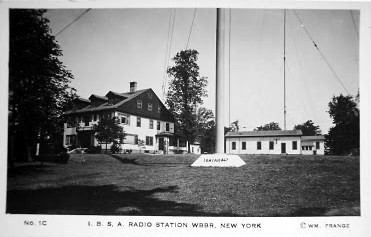
WBBR was slated as the New York City affiliate for NBC Sports Radio upon its fall 2012 launch; the station is not slated to carry any of the currently announced long-form programs.[1]
Bloomberg radio simulcasts
An audio simulcast of selected Bloomberg Radio programming is available on SiriusXM Satellite Radio, channel 113. Additionally, most programming is carried by Dial Global Networks and syndicated by United Stations Radio Networks to local radio stations across the country; it is one of three stations (KPIG in Freedom, California, and 660, The Fan in New York City, being the other two) that are broadcast in this manner.
Two separate radio stations became full-time affiliates of Bloomberg Radio and are so mentioned and branded in many on-air announcements; Boston AM station WXKS joined WBBR in the spring of 2013, and San Francisco AM station KNEW as of the fall of 2014. Both stations are owned and operated by iHeartMedia, Inc. (formerly Clear Channel Communications), but are branded as Bloomberg Radio and clear most of its programming.
Though Bloomberg Radio is streamed live on Bloomberg.com., this is not the same broadcast schedule that is aired over the radio frequency AM 1130 WBBR. The live stream is a totally different broadcast.
1930s-1940s
WNEW was acquired in 1934 by advertising executive Milton Biow and watch manufacturer Arde Bulova, who also acquired the broadcasting studios which had been constructed for the recently failed Amalgamated Broadcasting System. New York socialite Bernice Judis was hired as WNEW's first General Manager.
As a small, independent radio station, WNEW lacked the funds larger networks Columbia Broadcasting System, Mutual Broadcasting System, and the National Broadcasting Company used to produce daily programming common for that time such as comedy shows, soap operas and dramatic programs. However, Judis was not discouraged, and even welcomed the opportunity to develop her own schedule of innovative programming that included playing recordings of popular music throughout the day, creating the first all-night radio show, Milkman's Matinee, and cultivating a line-up of popular morning radio show personalities.
In 1935, WNEW pioneered the concept of a disc jockey when staff announcer Martin Block needed to fill time between news bulletins during his coverage of the Lindbergh kidnapping trial of Bruno Hauptmann. Block did not have access to a live orchestra to play music during the breaks as most network stations did, so he played records instead. Soon afterward, he piloted a 15-minute experimental show called the Make Believe Ballroom, during which he played records from popular bands and singers, posed as a live performance in an imaginary ballroom. During Block's tenure as host of Make Believe Ballroom, the show attracted 25% of the listening audience in New York City. The show continued in sporadic runs until the station's end in 1992.
In 1936, as the popularity of recorded music grew, WNEW was the defendant in a lawsuit initiated by bandleaders Paul Whiteman, Sammy Kaye and Fred Waring claiming that the playing of records on radio broadcasts was undermining performers' network contracts, which often called for exclusive services. The court ruled that WNEW, after purchasing each record, was allowed to broadcast it regardless of the resistance from artists. WNEW's victory subsequently authorized radio stations across the country to start playing recorded music and brought about the modern radio programming landscape.
In 1942, Judis set up a broadcast desk at the New York Daily News and WNEW became one of the first stations to carry hourly newscasts, something that would become commonplace in the industry over the next fifteen years. The station ended its association with the Daily News in 1958 and went on to build its own news department with 13 reporters and writers.
1950s-1960s
Through the 1950s and 1960s, WNEW's programming was largely based on a low-key, personality-driven format, with a line-up of deejays whose approach to radio evolved into what today might be termed "shock jock radio". Dee Finch teamed up with Gene Rayburn, and later Gene Klavan, on a long-running morning show, Anything Goes, that often playfully mocked its own advertisers, who in turn were still eager to have their products touted on the popular show.
During this time, pop music was dividing between rock and roll and popular standards. Some stations moved to a predominantly rock and roll format and became known as "Top 40" station, where the most popular songs were played frequently, while others played popular standards with (later) some softer rock and roll sounds, earning the name "Middle of the Road" (MOR) stations. At WNEW, deejays Ted Brown, Al Collins and William B. Williams helped define the MOR musical character of WNEW, lending their own "professionalism and elegance" to popular standards programming that included Frank Sinatra, Nat King Cole, Dean Martin, Johnny Mathis, Pat Boone, Patti Page, Bobby Darin, Ray Charles, Tony Bennett, Bing Crosby, Mills Brothers, McGuire Sisters, Perry Como, among others. By the mid 1960s artists like Bobby Vinton, Connie Francis, Wayne Newton, Steve Lawrence, Andy Williams, among others were added. Also, softer songs by artists like Elvis Presley, The Beatles, The Association, Petula Clark, Fifth Dimension among others were added. The station also played a couple big band songs from the 1930s and 1940s per hour. Beginning in 1965, WNEW cut back on big bands playing them only occasionally. They also cut back on standards artists, still playing them a third of the time. The airstaff was ordered to stop playing standards and big bands from their own personal collections and were ordered to remove them from the station. WNEW focused more on soft rock and played more charting hits on the Adult Contemporary charts.
The independent news desk at WNEW flourished in the late 1950s and early 1960s and was considered the most elaborate news operation at an independent radio station during that time. WNEW sent reporters around the world to places like Cuba to interview Fidel Castro and to Africa to interview medical missionary Albert Schweitzer. In 1960, the station won a Peabody Award and an Associated Press Award for the best regularly scheduled news program in New York. Aerospace author Martin Caiden anchored live broadcasts for WNEW of early American space launchings in the 1960s, actually traveling to Cape Canaveral to report on-site.
Long-time General Manager Bernice Judis left WNEW in 1959 and was replaced by John Van Buren Sullivan, who is best known for starting the station's affiliation with the New York Giants football team in 1960. Since home games were blacked out on television, as much as 60% of the New York radio audience relied on WNEW for play-by-play game coverage. WNEW broadcast Giants games, and later, Mets, Rangers and Knicks games, as "the voice of New York sports" for more than 30 years, until it was sold to Bloomberg L.P. in 1992.
1970s-1980s
The 1960s and 1970s marked a period of programmatic confusion for WNEW as listeners' musical tastes continued to evolve and the station struggled to maintain an adult pop standards audience that was being replaced by an expanding youth market. In an effort to attract young listeners, WNEW continued to air softer Top 40 hits, as well as adult contemporary hits despite resistance from established deejays like Williams who helped build WNEW's pop standards tradition. In the early 1970s, WNEW shifted its programming again and evolved into an adult contemporary format. The station also cut back on music during morning and afternoon drive times and shortened programs like Milkman's Matinee, which was renamed The Nightmare Show. Still, the station played a couple standards per hour and a big band song every few hours but also played tons of top 40 hits one would certainly not expect to hear on an easy listening station. WNEW was classified as Adult Contemporary and Pop Adult and reported to trade publications as such. Many of the current songs were AC only hits. Also, WNEW played a moderate amount of 50's rock and roll artists, 60's oldies, and Motown hits mixed in. They also had "Million Dollar Weekends" focusing on Oldies from the 50's through current product along with an occasional standard.
WNEW remained an adult contemporary station throughout the 1970s, while the station opted to return to its roots as a pop standards station in 1976, reinstating Milkman's Matinee on overnights. In October 1979, Make Believe Ballroom was reinstated on middays. Initially, the station mixed in big bands and standards in with their AC format. In 1980, WNEW slowly began mixing more standards into their adult contemporary format the rest of the day. Later in the fall, the station was big bands and standards full-time with the exception of morning and afternoon drive times. Million Dollar Weekends also became strictly Standards and Big Bands. In January 1981 WNEW converted to Big bands and standards 24 hours a day and deepened their selection of songs.
By 1981, WNEW focused on album cuts by big bands and standards artists. The morning show focused on more hit based easy listening standards with some big bands mixed in. Middays focused on music from the 1930s and 1940s, with a mix of big bands and crooners. Afternoons focused on a mix of deep cuts by vocalists along with some big bands. Late nights emphasised traditional jazz. WNEW continued this focus through the 1980s. On overnights, WNEW launched a jazz show in 1986, blending traditional, modern, and smooth jazz.
In 1988, WNEW went through a major ownership change, as their owners, Metromedia, sold half interest in the stations to Westwood One for $22 million. Even with new additions to programming such as Larry King's radio show, the station's ratings continued to decline and Westwood One was forced to cut costs and downsize staff in an effort to attract potential buyers. By 1988, WNEW began to focus on bigger hits by standards artists. While still playing big bands, the music focused more on 50's easy listening artists. In 1990, WNEW began mixing in soft hits by baby boomer pop artists like Elvis Presley, Neil Diamond, Beatles, The Righteous Brothers, Barry Manilow, among others. Late in 1991, WNEW backed off this type of music and focused again on traditional standards artists. WNEW continued cutting staff and local news in order to attempt to remain profitable.
1990s-present
WNEW was put up for sale in 1991, and Bloomberg L.P. purchased the station for $13.5 million shortly after. In the period before the format change, the airstaff was given an opportunity to say goodbye, culminating on December 10 and December 11, 1992, when the station had one big farewell show. During this farewell show, the airstaff reflected and talked very deeply about the loss of WNEW. The show would end at about a quarter after 8 p.m. on the 11th, as Mark Simone signed off for the last time with the entire current and many living former airstaffers at his side. The last two songs played were by Frank Sinatra: "Here's That Rainy Day" and "We'll Meet Again". WNEW joined NBC Talknet in progress, followed by Larry King as usual.
Then, after Larry King, beginning at 2 a.m. Saturday morning and throughout that day, WNEW would simulcast WYNY, and would continue for the next three days. The station would break away for New York Giants football, Talknet, and Larry King. On December 15, the sale of WNEW to Bloomberg became final, and the station continued simulcasting WYNY until 4 p.m. Then, after airing the Perry Como Christmas Special, shows from Talknet, and the first hour of Larry King (cutting it off a few minutes before midnight), the station would sign off forever at 11:59 p.m. As the station signed off, they abruptly ended Larry King and the pre-recorded voice of Director of Engineering Alan Kirschner went on and stated "At this time, 1130 WNEW New York will leave the air forever...Thanks for your support over the years...This is WNEW, New York". At the transmitter site, engineer Rene Tetro then turned off the transmitter for two minutes, changing the program feed during that period to the new feed from the Bloomberg offices. The station signed back on the air at 12:01 a.m. with the callsign WBBR. The station would then simulcast WQEW, which aired a standards format that had just signed on some two weeks earlier. The simulcast would continue until January 4, 1993, when WBBR's business news format debuted.
